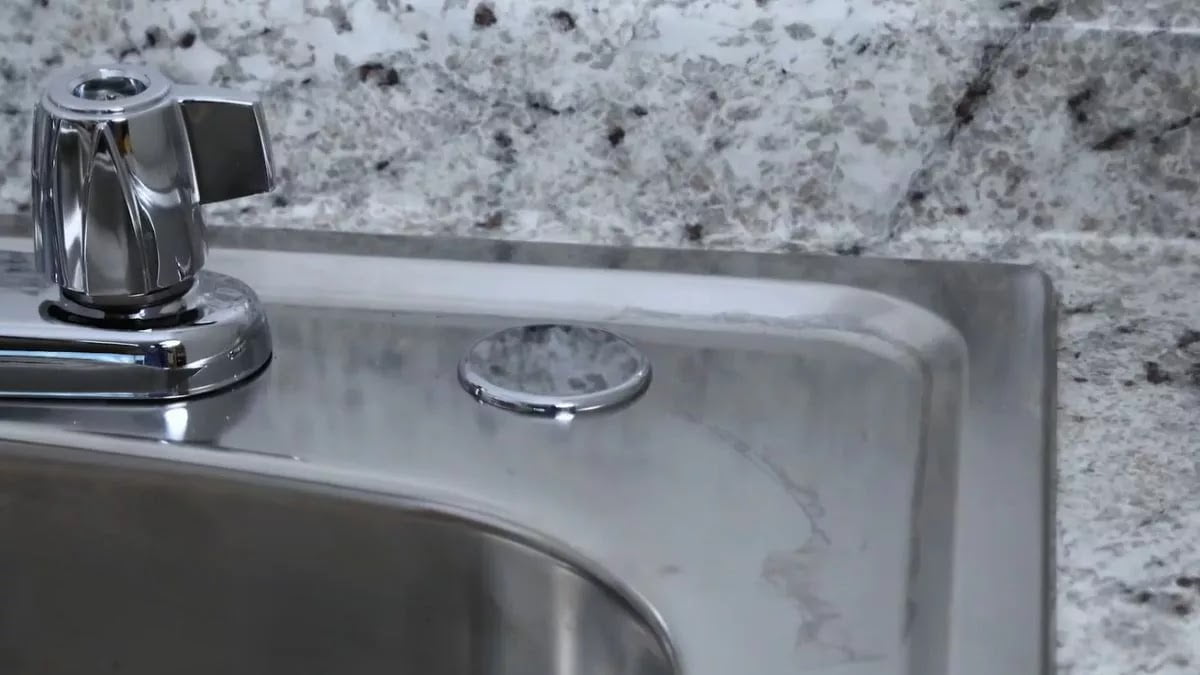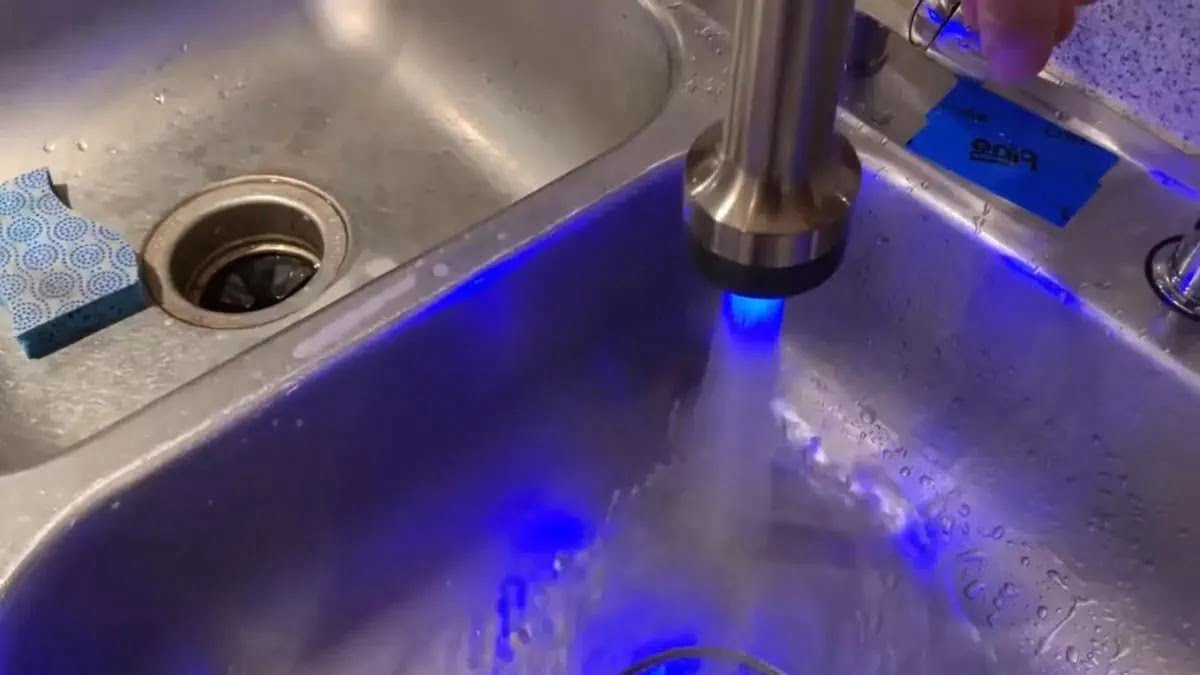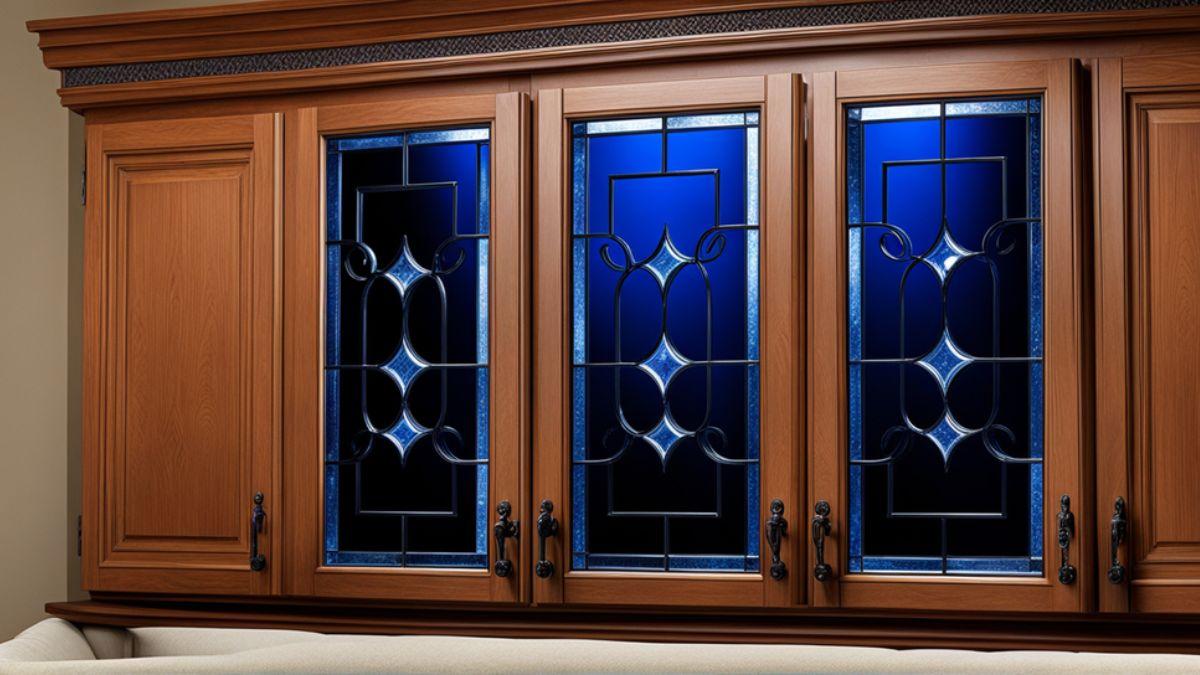
We may earn money or products from the companies mentioned in this post.
Have you ever noticed the seemingly odd holes around your faucet when you glance at your kitchen sink? The ones from a prior faucet installation, you know? Although useful, they don’t make for the most beautiful appearance in a kitchen that otherwise has excellent design. But don’t worry, there is a simple way to cover up those ugly holes and give your sink area a stylish touch. Tap-hole covers for kitchen sinks are ornamental coverings that slide straight into empty faucet holes to hide them from sight. You may select hole covers that perfectly complement the aesthetic of your kitchen since they come in a variety of designs, materials, and finishes. Installing them is an easy, do-it-yourself activity that will have a significant influence on your kitchen’s overall appearance. So bid adieu to those exposed faucet holes and welcome to a more fashionable sink area.
What Are Kitchen Sink Faucet Hole Covers?
Deck plates, escutcheons, or kitchen sink faucet hole covers are ornamental plates that go over your kitchen sink’s unused faucet holes. These covers are a simple method to conceal unattractive gaping holes in your sink deck if you have changed your faucet and want to add a final touch to your kitchen décor.
Types of Kitchen Sink Faucet Hole Covers
There are a few common types of hole covers to choose from:
- Basic metal or plastic covers: Low-cost, simple covers that get the job done. Stainless steel and chrome finishes match most sinks and faucets.
- Stone or ceramic covers: For a natural look, stone and ceramic covers made of materials like granite, marble, travertine, or porcelain are an attractive option. They provide weight and durability.
- Customizable or decorative covers: These covers allow you to add a personal touch. You can find customizable covers with interchangeable inserts, so you can change the look. Or choose a decorative cover with a unique shape, pattern, or motif to complement your kitchen’s style.
The number of holes you want to cover and the design of your kitchen will determine which kind you require. For the proper fit, measure the diameter and spacing of your holes. The diameter of a hole cover usually ranges from 1 to 3 inches.
You can give your kitchen a unified appearance and permanently get rid of ugly holes by selecting a kitchen sink faucet hole cover that matches or compliments the finish of your sink and faucet. A straightforward fix that fulfills both aesthetic and functional needs—now that’s clever design!
Why Use Faucet Hole Covers in Your Kitchen?
Why deal with ugly, exposed holes in your kitchen sink? Faucet hole covers are an easy, inexpensive solution to hide unsightly holes and add a decorative touch.
Functionality
Faucet hole covers serve a purely functional purpose: they cover unused holes in your sink, preventing food and debris from falling in. This helps keep your sink area clean and prevents clogs. They also prevent rodents and insects from entering through unsealed holes.
Esthetics
In addition to functionality, faucet hole covers can enhance the look of your kitchen. Stainless steel, brushed nickel, oil-rubbed bronze—there are covers to match any sink finish. Decorative covers featuring scrollwork, floral patterns, or gemstone accents dress up your sink area and tie in with your kitchen decor.
Installation
Faucet hole covers are extremely easy to install. Most simply slide into the unused holes in your sink deck and stay in place with tension or set screws. No plumbers or special tools are needed. They can be installed and removed in seconds when you need access to the holes.
Peace of Mind
Knowing the unused holes in your sink are sealed gives you peace of mind. No more worrying about objects slipping down holes or dealing with unpleasant surprises courtesy of pests. Faucet hole covers provide an easy solution to give you comfort and confidence in your kitchen.
With simple installation, aesthetic options to match any decor, and real benefits like functionality, cleanliness, and peace of mind, faucet hole covers are a smart addition to any kitchen. Your sink will thank you!
Different Types of Kitchen Faucet Hole Covers
When it comes to covering unused faucet holes in your kitchen sink, you have a few options to choose from. The type you select depends on your needs, style preferences, and budget.
Faucet hole cover plates
These metal or plastic cover plates simply snap or screw into place over the open holes. They’re affordable, easy to install, and get the job done. However, they may not match your kitchen decor perfectly or have the most stylish appearance. For a low-cost, practical solution, faucet hole cover plates can work great.
Decorative hole covers
For a more attractive option, consider decorative hole covers. These covers, available in a range of styles, materials, and price points, allow you to complement your kitchen’s design and add an accent piece. Choices include:
- Ceramic or stone hole covers: Made of ceramic, marble, granite, or slate, these hole covers provide an upscale look. They need to be affixed in place, often with strong waterproof adhesive.
- Metal hole covers: Brass, copper, stainless steel, and pewter hole covers can create an industrial or rustic vibe. Look for ones that either screw in place or adhere with a water-resistant adhesive.
- Wood hole covers: Wood hole covers, like bamboo, teak, or walnut, add warmth and natural beauty. Due to wood’s tendency to warp with moisture, these should be sealed properly before being installed in or around sinks.
Faucet hole covers with extras
For additional functions, consider faucet hole covers that provide built-in extras like:
- Soap dispensers: Hole covers with integrated liquid soap dispensers are convenient and keep your sink area tidy.
- Paper towel holders: Choose a hole cover with an attached paper towel holder for easy access.
- Sprayers: Some covers incorporate a retractable kitchen sprayer that can pull out when needed and tuck away out of sight when not in use.
With the right hole cover option for your needs and style, you can hide unused faucet holes and give your kitchen an attractive, finished look. Shop around at home improvement stores or online retailers to find hole covers that complement your kitchen perfectly.
How to Choose the Right Size Faucet Hole Cover
Once you’ve decided to cover those unsightly holes in your sink, the next step is choosing faucet hole covers in the proper size. The last thing you want are covers that are too large or too small for your sink openings.
Measure Your Sink Holes
The only way to ensure you get the right size is to measure the diameter of the holes in your sink. Use a tape measure or ruler to measure straight across the center of each hole. Make a note of the exact measurements in inches. These numbers will determine what size cover you need.
Choose Between Common Sizes
The most popular sizes for faucet hole covers range from 1 1/4 inches up to 2 1/2 inches in diameter. For a standard 4-inch center-set faucet, 1 1/4- or 1 1/2-inch covers typically work well. If you have a widespread faucet with 6 to 8 inches between handles, 2-inch covers are a good choice. For single-handle faucets, you may need larger 2 1/2-inch covers.
Consider Esthetics
In addition to size, think about the overall look you want. Chrome, brushed nickel, and satin brass covers provide a simple metallic finish. Porcelain or ceramic disks offer an elegant solid color option. You can also find covers with decorative details like scrollwork or fleur-de-lis accents for a more stylish look. Choose a finish and style that complement your faucet and kitchen decor.
Allow for Adjustability
Some faucet hole covers are designed with adjustable diameters and use a tension ring or setscrew to secure them in place. These provide a customized fit for odd-sized holes or minor variations in diameter. Adjustable covers are especially useful for older sinks where the holes may not be perfectly round or evenly spaced. For the most secure fit, look for covers that can adjust within a range of at least 1/2 inch.
With the proper measurements, considerations of style, and adjustable options, you’ll find faucet hole covers that slip perfectly into place and complete the finished look of your kitchen sink.
Matching Your Faucet Hole Cover to Your Existing Decor
The secret to creating a unified appearance in your kitchen is to match your faucet hole cover to the current décor. It should blend in rather than stand out like a sore thumb! Think about the general design of your kitchen: is it rustic, modern, classic, or somewhere in between? Consider the main colors as well as elements like metal, stone, and wood.
Select a soapstone, granite, or marble-like countertop for a classic kitchen with rich wood cabinetry. These coverings with a natural stone motif provide a classic style. Select a minimalist metal cover, such as one made of stainless steel, chrome, or brushed nickel, for sleek, modern environments. These industrial-chic choices cast light and give off a contemporary atmosphere.
A ceramic or porcelain countertop that mimics stone, concrete, or wood is perfect for a kitchen designed in the cottage or farmhouse style. For a rustic, worn-in appearance, distressed metal coverings in old bronze or pewter would also look great. Remember the little things, like the design of your cover—a rounded cover looks more conventional, while a square cover goes well with a minimalist space.
The key is finding a faucet hole cover that mirrors elements that are already present in your kitchen design. This helps it look cohesive and thoughtfully incorporated into the space. Some other tips for matching your cover to the decor:
- Consider the number of holes in your sink—get a cover that specifically fits one, two, three, or four holes to avoid gaps.
- Match the shape of your sink, whether it’s square, rectangular, oval, or apron-front. An apron-front sink may require a cover with a curved front edge.
- Coordinate the finish of your cover with cabinet hardware like knobs and pulls. For example, an oil-rubbed bronze cover pairs well with hardware in the same finish.
- Think about countertop materials like granite, marble, or quartz. Select a cover that mimics the pattern and veining of the stone.
- Take photos of your kitchen and bring them to the store when shopping for covers. This visual reference will make it easier to find suitable matches.
With some consideration for your kitchen’s style and elements, you can choose a faucet hole cover that blends in beautifully. Before you know it, those unsightly holes will be hidden in plain sight!
Installing a Kitchen Sink Faucet Hole Cover
Installing a kitchen sink faucet hole cover is an easy DIY project that can give your kitchen a quick facelift. No need to call a plumber—you’ve got this!
Gather Your Supplies
To get started, you’ll need a few basic tools and your faucet hole cover kit. Make sure you have:
- Your faucet hole cover kit will include hole covers, screws or bolts, and a cover plate or trim ring
- A screwdriver or drill, depending on your hole cover type
- Plumber’s putty or caulk
- A towel to wipe up any excess putty
Clean and Dry the Area
Give the area around your sink faucet holes a good wipe-down to remove any dirt or debris. Make sure the surface is clean and dry so the putty or caulk will adhere properly.
Apply Putty or Caulk
Apply a ring of plumber’s putty or caulk around the edge of each faucet hole. Place your faucet hole covers over the holes and press down firmly so they adhere to the putty. The putty or caulk will create a watertight seal. Wipe away any excess that squeezes out from under the edges with your towel.
Secure the Covers
Depending on your specific faucet hole cover kit, you may need to secure the covers in place with screws or bolts. If so, use your screwdriver or drill to drive the screws through the trim ring or cover plate and into the countertop to hold everything snugly in place. Double-check that all parts are securely installed and the area around the new covers is clean before using your sink again.
Add the Finishing Touch
Place the trim ring or cover plate over the faucet hole covers, and you’re done. Step back and enjoy your refreshed kitchen sink area. The new faucet hole covers will blend right in and hide those unused holes, giving your kitchen an upgraded look with minimal effort or expense.
Cleaning and Caring for Your New Faucet Hole Cover
To keep your new faucet hole cover looking its best, follow these care and cleaning tips:
Wipe Down Regularly
- Gently wipe down your faucet hole cover once a week or so with a soft, damp cloth to remove any splatters, splashes, or spots. Dry thoroughly with a clean cloth to prevent water spots. For stubborn stuck-on messes, you can make a paste from baking soda and water and gently scrub with the paste using a soft-bristled brush. Rinse well with water to remove all residue.
Disinfect Periodically
- About once a month, or if you notice any mildew or soap scum buildup, disinfect your faucet hole cover. Make a solution of equal parts water and white vinegar or a commercial disinfectant like Lysol. Spray it on and let it sit for several minutes, then scrub with an abrasive sponge or scrubber. Rinse thoroughly with water and dry with a soft cloth. This will sanitize your faucet hole cover and leave your sink area hygienic.
Protect the Finish
- Avoid using any harsh chemicals, abrasive cleaners, or strong solvents like lacquer thinner to clean your faucet hole cover. These can damage the finish and dull the surface. For stuck-on messes, try gentle cleaning methods first before moving on to anything harsher. Rinse your faucet hole cover after using any commercial cleaner to prevent residue buildup.
Re-seal if Needed
- If you notice water seeping or dripping underneath your faucet hole cover, it may need resealing. Clean and dry the area thoroughly. Apply a bead of waterproof plumber’s putty, silicone sealant, or epoxy around the edge of the hole cover according to the product directions. Place the cover over the holes and press firmly to hold it in place. Wipe away any excess that squeezes out. Allow adequate time for the sealant to dry completely before using your sink.
By following these simple care and cleaning tips, your kitchen sink faucet hole cover should continue looking and functioning like new for many years to come. Let us know if you have any other questions!
Top 5 Kitchen Faucet Hole Cover Styles
When choosing a faucet hole cover for your kitchen sink, you have several stylish options to consider:
Deck plates
Deck plates are simple metal disks that cover the unused faucet holes in your sink. They come in a variety of finishes, like brushed nickel, chrome, and stainless steel, to match your faucet and sink hardware. Deck plates are an inexpensive solution if you’re on a budget but want a cohesive look.
Soap dispenser
Why not put that extra faucet hole to good use with a matching soap dispenser? A soap dispenser adds convenience while coordinating perfectly with your kitchen decor. Look for a dispenser in the same finish and style as your faucet for a custom look.
Filtered water dispenser
For fresh filtered water at your fingertips, install a filtered water dispenser in an unused faucet hole. Choose from refrigerated or non-refrigerated dispensers to suit your needs. This is a great option if you want chilled, filtered water but don’t have room for a full water cooler.
Hot water dispenser
A hot water dispenser provides instant boiling or hot water from an extra faucet hole for beverages like tea, oatmeal, or ramen. Look for a dispenser with safety features like a child lock to prevent accidental scalding.
Faucet with built-in accessory
Some premium kitchen faucets come with useful accessories like a built-in soap dispenser, filtered water dispenser, or hot water dispenser. If you’re replacing your faucet, choose one with a built-in accessory to utilize your extra faucet hole in an integrated, high-tech way.
Using one of these covers or dispensers is an easy way to hide unused faucet holes while adding a useful function or a stylish accent to your kitchen sink area. With so many options, you can find the perfect solution to suit your needs, budget, and decor.
Conclusion
That’s it—a quick and affordable way to cover up the exposed faucet holes in your kitchen sink. No more glancing at gaping holes, whether doing dishes or entertaining. For a unified aesthetic, choose a design that goes well with the hardware and décor in your kitchen. It only takes a few minutes to install the cover plates, and no additional equipment or expertise is needed. You may have more counter space and peace of mind knowing that your sink area looks finished for a few dollars. Why don’t you act sooner? Examine your alternatives and submit your purchase right now. It won’t take long for you to appreciate your newly refurbished, hole-free sink. Issue resolved!
More kitchen Faucets recommendations
- Top 10 The Best Luxury Kitchen Faucets for Every Budget
- What Is the Highest GPM Kitchen Faucet? Meet the Moen Arbor
- Best Gold Kitchen Faucets of 2023: Top 5 Picks for a Luxurious Look
- Waypoint Cabinets vs KraftMaid: Which is the Better Choice?
- American Woodmark Cabinets: Real Customer Reviews
- Midea Appliances Reviews: What Customers Are Saying
- The Best High-End Kitchen Faucets for Every Budget
- Allen and Roth Kitchen Faucet With LED Light:
- How to install a Moen Kitchen Faucet With Sprayer
- How to Install a Kohler Kitchen Faucet: A DIY Tutorial












